- Home
- Medicine List
- Life saving Drugs
- Other Lifesaving Drugs
- Deferoxamine 500mg
Deferoxamine 500mg
- Order
- Directions
- Comments
- Related Products
MedEx answers any queries you might have regarding Deferoxamine-500 purchase, shipping and payment terms.
Feel free to contact support through inquiry form, MedeEx is fully dedicated towards your needs 24/7.
Indications of Deferoxamine 500:
Transfusion hemosiderosis, which appeared after blood transfusion on the background of hemolytic anemia (including thalassemia and autoimmune hemolytic anemia), sideroblastic anemia, Diamond-Blackfan syndrome, aplastic anemia); Idiopathic primary hemochromatosis (in patients who cannot do bloodletting due to concomitant diseases: acute anemia, hypoproteinemia). Idiopathic hemosiderosis of the lungs, hemosiderosis on the background of cirrhosis of the liver. Hemosiderosis (against the background of porphyrin disease); acute poisoning of Fe. Chronic hyperaluminia in patients with terminal renal insufficiency (supporting dialysis); skeletal diseases associated with an increased Al3 + content, dialysis encephalopathy and / or anemia associated with an increased Al3 + content. Diagnostic test for determining pathological deposits of Al3 + or Fe.
Contraindications of Deferoxamine 500:
Hypersensitivity, anuria, pregnancy (I trimester), lactation.
Side effects of Deferoxamine 500:
Allergic reactions, irritation at the injection site, decreased blood pressure, rhythm disturbances, collapse, dizziness, epileptiform seizures, gastrocnemius muscle cramps, nausea, diarrhea, renal or hepatic insufficiency, thrombocytopenia. With long-term use – reduced visual acuity, peripheral and twilight vision, color perception, lens opacity, cataract, hearing loss (in the high frequency range). Overdose. Symptoms: decreased blood pressure, collapse, tachycardia, gastrointestinal disorders. Treatment: there is no specific antidote, it is deduced during dialysis.
Interaction of Deferoxamine 500:
Pharmaceutically incompatible with heparin. The phenothiazine derivatives, when combined, result in a temporary disorientation. Ascorbic acid in a dose of 150-250 mg / day enhances the excretion of iron compounds; higher doses do not cause additional elimination of iron compounds; ascorbic acid in a dose of more than 500 mg / day causes cardiac deterioration.
Special instructions for Deferoxamine 500:
For parenteral administration, a 10% injection solution is used, which can be diluted with NaCl solution and dextrose; Only clear solutions should be administered. The solution cannot be stored at room temperature for more than 24 hours, dissolved deferoxamine can be added to the dialysis fluid and administered intraperitoneally to patients receiving CAPD and CCPD. In patients with elevated iron content, against the background of deferoxamine therapy, infectious diseases (including sepsis) caused by Yersinia entrerocolitica and Yersinia pseudotuberculosis can develop. If during the therapy the temperature rises and symptoms of enteritis or enterocolitis, diffuse pain in the abdominal cavity, pharyngitis appear, then the treatment is temporarily stopped and antibacterial therapy begins. Before and during therapy with deferoxamine, a hearing and vision test should be performed. In patients with encephalopathy caused by an excess of Al3 +, deferoxamine may aggravate the course of epilepsy – due to a dramatic increase in the number of circulating Al3 + (the prescription of clonazepam may prevent it). When removing Fe compounds, urine can be painted red-brown.
